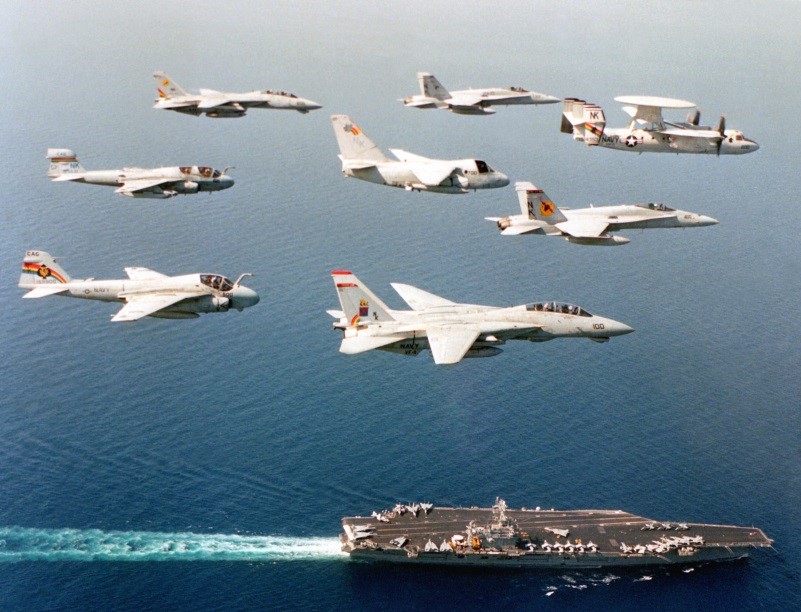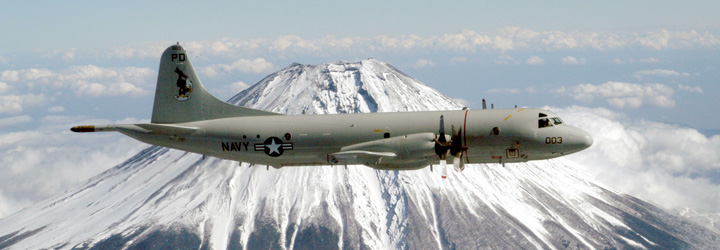Naval Aviation

Naval Aviation
The late 80’s and early 90’s were a difficult time for US Naval Aviation. Many of the older types were becoming obsolete or out dated (A-6, F-14), and their replacement projects had been cancelled, such as the A-12 strike replacement for the A-6 and the Super Tomcat 21. Even programs to improve current airframes were in trouble such as the A-6F Intruder II and A-6G upgrade. Therefore, the Navy was approaching the mid 90’s with no new fighter aircraft on the horizon. Relying instead on moving to single fleet of F/A-18s using the new AMRAAM air to air missile by 1998/99.
Technology was providing some improvement elsewhere however – the S-3B, introduced in the mid 80’s was a technological paradigm shift from the S-3A, and the latest E-2C’s were proving to be exceptional. Augmented by a new generation of patrol aircraft, the P-3C; this fleet of surveillance aircraft were using the rapidly advancing power of computers to quickly and accurately categorize targets and showed the way ahead for providing situational awareness to a Task Force commander.
More good news was available with the new generation of Helicopters – the SH-60 family was developing into a resounding success. This single airframe was able to replace smaller (SH-2 Seasprite) and larger (SH-3 Sea King) models which were becoming obsolete or simply incapable of using the latest weapons. The Seahawk was a rare aircraft that could satisfy operators, maintainers and budget keepers all at once.
Northern Fury
Northern Fury finds the USN in the process of rapidly retiring the A-6 fleet, only two carriers still have a strike squadron. Starting in 1996 the plan is to start retiring the F-14s. By 1998 the first Carrier Air Wings (CVW) of purely F/A-18s is to be fielded, a situation that has many admirals quite upset and crying for more advanced capability and flexability.
The resurgence of the Soviet block caused even more turmoil in naval aviation. Executive orders from the President and a hawkish Congress demanded that aircraft carriers be retained, so an urgent need arose to maintain sufficient naval aviation to equip 12 CVW. The extra wing would allow four wings to be held at high readiness (2 on each coast), four in a rapidly deployable posture, and four more in training. Even this meant that 3 of the 15 carriers called for in the 600 ship navy, would not have air wings, since one carrier is always in dry-dock and one more in a multi-month maintenance period, this left one carrier without aircraft. To satisfy this requirement, the US Congress agreed to fund a 13th CVW. The plan for CVN-74 when it entered service later in 1994 was to resume rotating air wings as the USN reverted to routine refit program. As the events of the campaign unfold however, this does not happen and adjustments need to be made.
